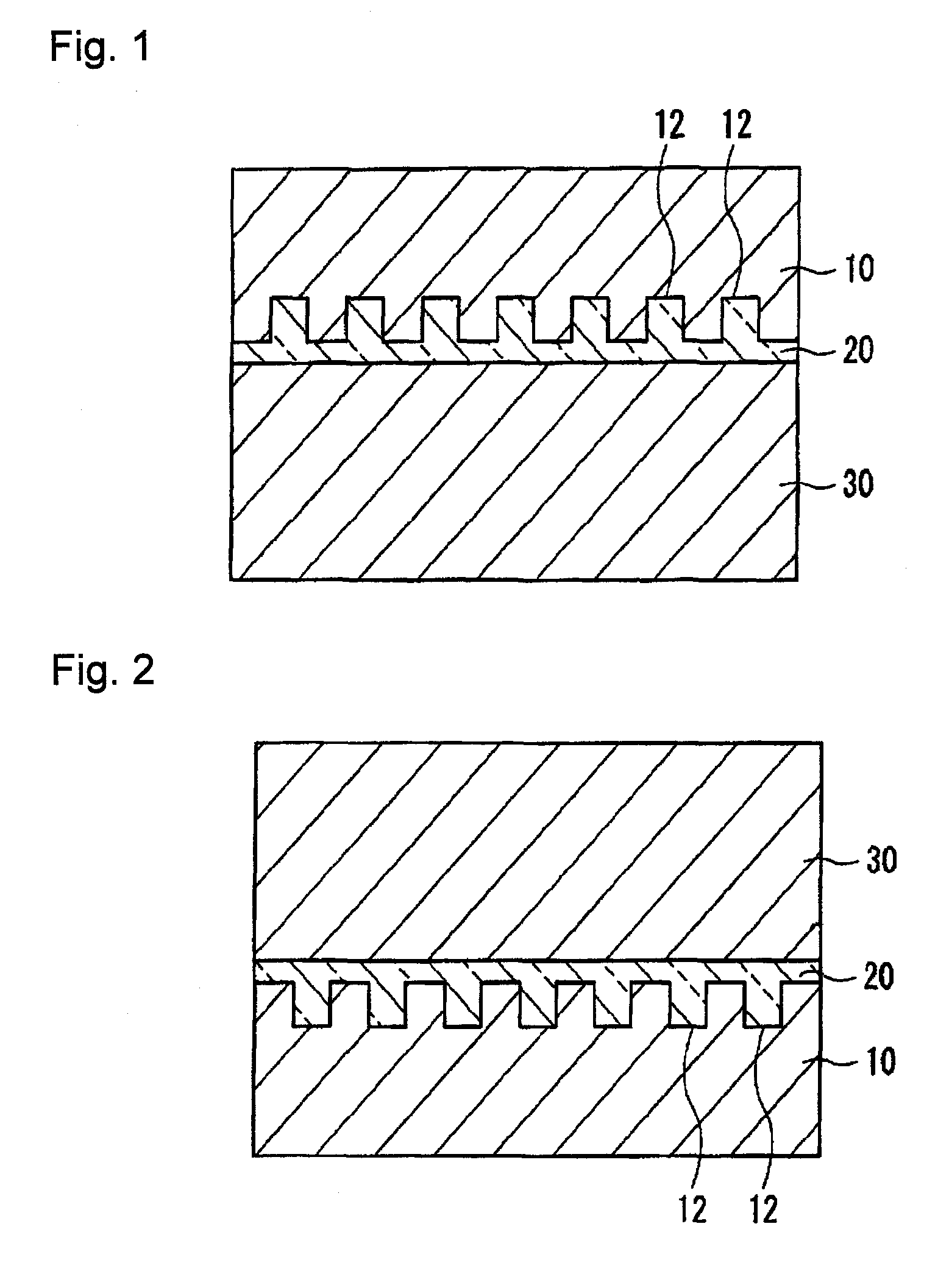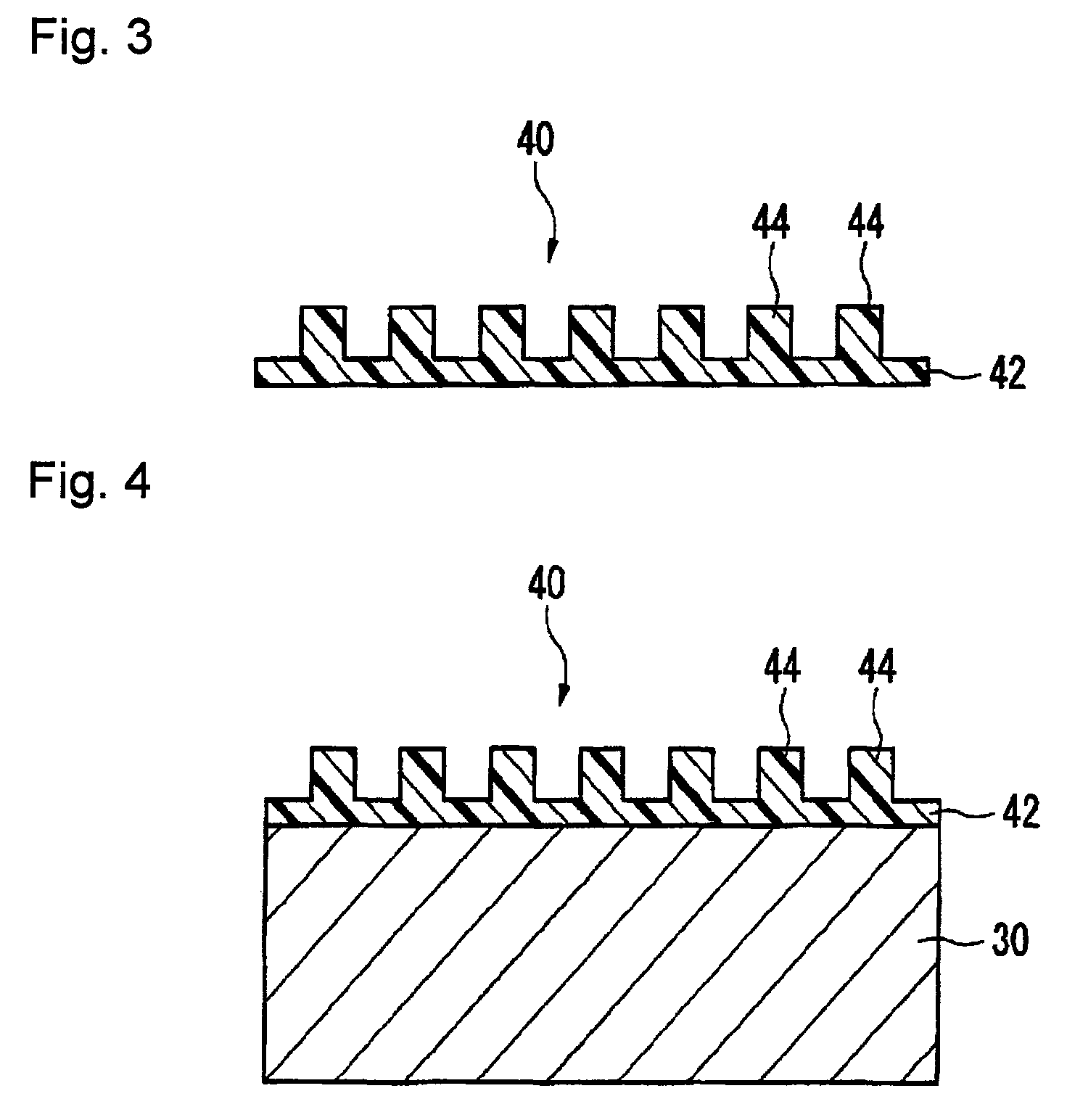Photocurable composition and method for producing molded product with fine pattern
a composition and composition technology, applied in the field of photocurable composition and a method for producing a molded product with a fine pattern, can solve the problems of low mechanical strength, difficult to precisely transfer the reverse pattern of the mold, and difficult to separate the cured product and the mold, and achieve excellent mold release characteristics and mechanical strength, excellent durability
- Summary
- Abstract
- Description
- Claims
- Application Information
AI Technical Summary
Benefits of technology
Problems solved by technology
Method used
Image
Examples
example 1
[0259]In a vial (internal capacity: 6 mL), 1.52 g of the compound (A1), 0.88 g of the compound (B11) and 1.44 g of the compound (C1) were added, then 0.16 g of the photopolymerization initiator (D1) was mixed, and the mixture was subjected to filtration through a 0.2 μm filter made of polyethylene terephthalate (hereinafter referred to as PTFE) to obtain a photocurable composition. The composition of the photocurable composition is shown in Table 1, and the evaluation results are shown in Table 2.
example 2
[0260]In a vial (internal capacity: 6 mL), 1.52 g of the compound (A2), 0.88 g of the compound (B11) and 1.44 g of the compound (C1) were added, then 0.16 g of the photopolymerization initiator (D1) was mixed, and the mixture was subjected to filtration through a 0.2 μm filter made of PTFE to obtain a photocurable composition. The composition of the photocurable composition is shown in Table 1, and the evaluation results are shown in Table 2.
example 3
[0261]In a vial (internal capacity: 6 mL), 1.52 g of the compound (A3), 0.88 g of the compound (B11) and 1.44 g of the compound (C1) were added, then 0.16 g of the photopolymerization initiator (D1) was mixed, and the mixture was subjected to filtration through a 0.2 μm filter made of PTFE to obtain a photocurable composition. The composition of the photocurable composition is shown in Table 1, and the evaluation results are shown in Table 2.
PUM
| Property | Measurement | Unit |
|---|---|---|
| viscosity | aaaaa | aaaaa |
| viscosity | aaaaa | aaaaa |
| mass % | aaaaa | aaaaa |
Abstract
Description
Claims
Application Information
 Login to View More
Login to View More - R&D
- Intellectual Property
- Life Sciences
- Materials
- Tech Scout
- Unparalleled Data Quality
- Higher Quality Content
- 60% Fewer Hallucinations
Browse by: Latest US Patents, China's latest patents, Technical Efficacy Thesaurus, Application Domain, Technology Topic, Popular Technical Reports.
© 2025 PatSnap. All rights reserved.Legal|Privacy policy|Modern Slavery Act Transparency Statement|Sitemap|About US| Contact US: help@patsnap.com



